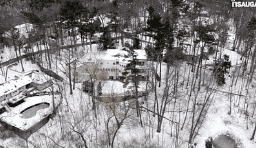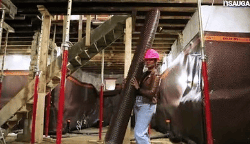More cities placed in “red zone” as new models suggest that Ontario could see over 6,000 new cases a day by December
Published November 13, 2020 at 9:40 pm

Halton, York and Hamilton will join Peel (Brampton, Mississauga and Caledon) and Toronto in the “red zone” next week.
As reported by inhalton.com earlier today, the Provincial government has announced Halton will move into the “Red” Control category that will limit social gatherings, the closure of some indoor dining, add more controls on usage of gyms, and eliminate sports games at both indoor and outdoor facilities. The Red Control category is the most restrictive in the Province’s COVID framework.
“We have to do this,” Ontario Premier Doug Ford said.
“Based on current projections we could be overwhelmed with cases, hospitals could be overwhelmed, the situation is that bad. As premier, I can’t accept that and I won’t accept that. We must do whatever it takes to slow the spread of this virus.”
The news comes one day after public health officials announced that Ontario could see up to 6,500 new daily cases of COVID-19 by mid-December unless steps are taken to limit the spread of the virus.
The new modelling predicts the province will reach 2,500 new daily cases by that time if the growth rate is at three per cent, or 6,500 if growth is at five per cent.
Dr. Adalsteinn Brown, one of the experts behind the projections, said a five per cent growth rate is in line with the current situation, or even “slightly optimistic.” The growth rate over the last three days was six per cent, he said.
Brown said more restrictions should be put in place in some of the hot spot areas in order to reduce cases and the impact on the health-care system. Otherwise, the case count in Ontario will surpass that in several European jurisdictions that have implemented some form of lockdown, he said.
“If we continue on with the current level of restrictions, I would not expect to see any deviation from the current results, you’d continue to see growth,” he said Thursday.
“I do not believe that there’s a way that the cases will change without action.”
Even if new measures are imposed, it will take a while for improvements to appear, he said.
The new projections for how the virus might spread in Ontario come as the province has reported daily case increases above 1,000 for the past week, and a record 1,575 on Thursday.
They also come amid ongoing criticism of the province’s new tiered system for managing COVID-19 measures, which places local health units in green, yellow, orange, red, or lockdown categories based on metrics such as the number of cases per 100,000 people.
A group representing tens of thousands of Ontario physicians called Thursday for the government to lower the thresholds for imposing stricter measures, saying the framework is too lax, particularly at a time when case counts are surging.
The Ontario Medical Association said the criteria to move from one alert level to the other should be much lower – as much as 50 per cent lower in some cases – and the higher levels should include a ban on indoor dining in restaurants and bars.
Meanwhile, a report in the Toronto Star said the provincial government ignored the advice of its own public health agency in designing the system introduced last week.
The newspaper reported that while Health Minister Christine Elliott said the framework was created after consulting with two health-care advisory groups, one group said it wasn’t consulted and a member of the other said she never saw the final plan before its release.
Ontario Premier Doug Ford said Thursday the report was “totally inaccurate” and defended the colour-coded system, maintaining it is meant to serve as a baseline for local health authorities to build on with additional measures.
Ford said the framework was proposed by Ontario’s chief medical officer of health, Dr. David Williams, and dismissed the criticism as simply a difference of opinion within the medical community.
As the new projections were announced, Williams stressed the numbers reflect infections that took place before the new system took effect, but didn’t rule out any future amendments.
“The framework has not been out for a week yet and we have to see what’s going to happen with that,” he said.
The modelling shows key indicators for the pandemic continue to worsen, though the impact varies from region to region.
The percentage of COVID-19 tests coming back positive at the end of last week ranged from 1.3 in the Eastern Ontario public health unit to just over 10 in Peel Region, one of the provincial hot spots.
Cases and deaths in long-term care homes continued to rise, the document shows. Out of the 196 resident deaths since Aug. 10, 71 took place over the last seven days.
The document lays out projections for a growth rate in cases of three and five per cent, but Brown said either scenario will see the strain on intensive care units pass the threshold for cancelling surgeries within the next two weeks.
Paola Loriggio, The Canadian Press
With files from Steve Pecar
insauga's Editorial Standards and Policies advertising





